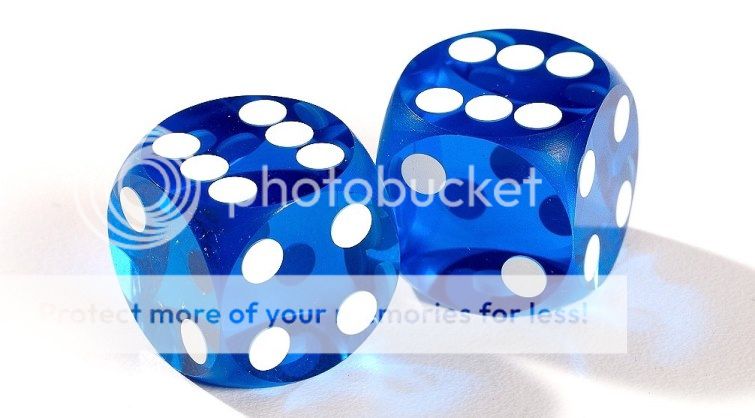The Bizzare Dice

A die is selected at random from an urn that contains two six-sided dice. Die number 1 has three faces with the number 2 while one face each has the numbers 1 , 3 , and 4 . Die number 2 has three faces with the number 4 while one face each has the numbers 1 , 2 , and 3 . The first five rolls of the die yielded the numbers 2 , 3 , 4 , 1 , and 4 in that order. The probability that the selected die was die number 2 can be expressed as q p . Calculate p + q .
The answer is 7.
This section requires Javascript.
You are seeing this because something didn't load right. We suggest you, (a) try
refreshing the page, (b) enabling javascript if it is disabled on your browser and,
finally, (c)
loading the
non-javascript version of this page
. We're sorry about the hassle.
4 solutions
3/4 = 6/8 so, your solution would be good, if the problem would say p, q relative coprimes, but it doesn´t say it
Let D 1 be the die number 1 , D 2 be the die number 2 , and N be the first five rolls of the die. D 1 , D 2 , and N are random variables. We use Bayesian approach. Pr [ D 1 ] = Pr [ D 2 ] = 2 1 , Pr [ N = 2 ∣ D 1 ] = 6 3 = 2 1 , Pr [ N = 1 ∣ D 1 ] = Pr [ N = 3 ∣ D 1 ] = Pr [ N = 4 ∣ D 1 ] = 6 1 , Pr [ N = 4 ∣ D 2 ] = 6 3 = 2 1 , Pr [ N = 1 ∣ D 2 ] = Pr [ N = 2 ∣ D 2 ] = Pr [ N = 3 ∣ D 2 ] = 6 1 , and N = 2 , 3 , 4 , 1 , 4 . Therefore Pr [ D 2 ∣ N = 2 , 3 , 4 , 1 , 4 ] = Pr [ N = 2 , 3 , 4 , 1 , 4 ∣ D 1 ] ⋅ Pr [ D 1 ] + Pr [ N = 2 , 3 , 4 , 1 , 4 ∣ D 2 ] ⋅ Pr [ D 2 ] Pr [ N = 2 , 3 , 4 , 1 , 4 ∣ D 2 ] ⋅ Pr [ D 2 ] = 2 1 ⋅ 6 1 ⋅ 6 1 ⋅ 6 1 ⋅ 6 1 ⋅ 6 1 ⋅ 2 1 + 6 1 ⋅ 6 1 ⋅ 2 1 ⋅ 6 1 ⋅ 2 1 ⋅ 6 1 ⋅ 2 1 6 1 ⋅ 6 1 ⋅ 2 1 ⋅ 6 1 ⋅ 2 1 ⋅ 6 1 ⋅ 2 1 = 4 3 . Thus, p + q = 3 + 4 = 7 .
# Q . E . D . #
There are three equally-likely ways to get this roll with die one (3x1x1x1x1), and nine equally-likely ways to get it with die two (1x1x3x1x3). We exclude all cases but these 12. 9/12, or 3/4 of them used die 2.
Its a very easy problem based on Bayes theorem
This is a really fantastic problem! As for the solution, there are two ways to tackle this problem. We can apply Bayes' Law, which is a really cool theorem that you can read about here . I have a much simpler solution that is a bit more intuitive:
First let us calculate what the probability that if Dice 1 is picked that that particular sequence occurs. This is simply 5 1 8 4 1 . Notice that if Dice 2 is picked, the probability that the sequence occurs is 1 7 2 8 1 . It is obvious that Dice 2 is three times more likely to roll that particular sequence! Read that line again: Dice 2 is three times more likely to roll that particular sequence! So if we've established that, then the probability that it is indeed Dice 2 is 4 3 , thus the answer is 3 + 4 = 7 and we're done! No messiness, no weird manipulations, not a lot of LaTeX! Always simplify problems, they produce beautiful results. :D